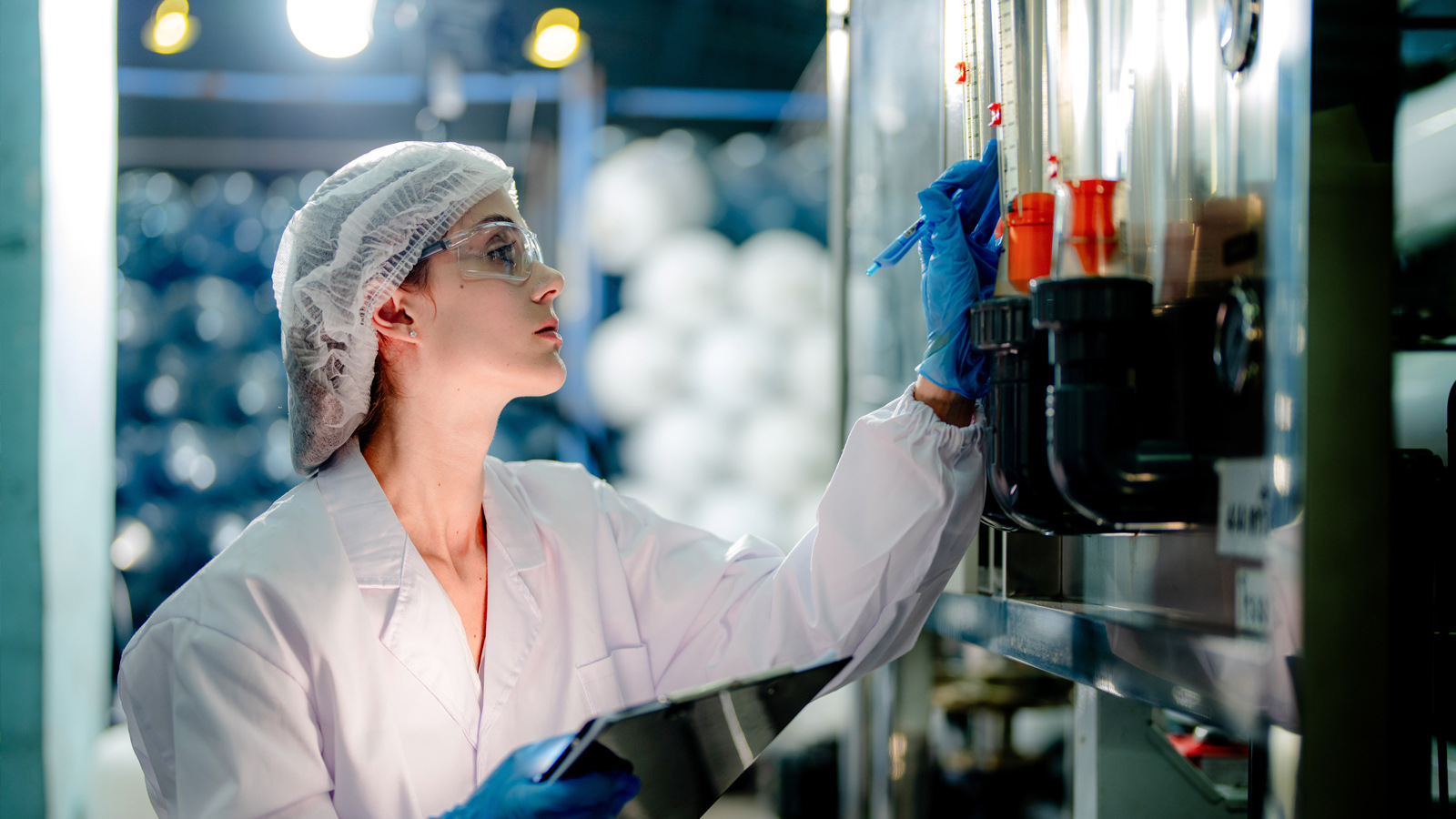Chemical recycling is a technology of increasing interest, especially now that the EU has opened the doors wide for chemical recycling. What opportunities does chemical recycling offer for a circular future? And how does this solution relate to a broken linary system?We explore the topic in this article.
In Europe alone, about 30 million tons of plastic waste are collected every year. About 85% of this is incinerated. Things are not much better with textile waste. Every year, the EU produces 12.6 tons of textile waste. According to data from the European Environment Agency (EEA), less than 1% of this is recycled into new textile products. The majority of textile waste is incinerated or landfilled.
This is not only a waste of our precious resources, but also contributes to carbon emissions and pollution of land and water. Therefore, there is a great demand for methods that facilitate the recycling of such materials. This is where chemical recycling comes in.
Chemical recycling, what is it?
Chemical recycling is the umbrella term for various waste recycling technologies for which traditional mechanical recycling is too difficult or unprofitable. This is especially true for composite and contaminated polymeric plastics, but also for textiles, electronics and other materials. Whereas until now difficult-to-recycle products have usually been incinerated, exported or landfilled, chemical recycling can ensure that the components of these wastes can be reintroduced into the chain as high-quality secondary raw materials.

The difference between mechanical and chemical recycling
Mechanical recycling is a form of recycling in which the chemical structures of the waste product are not processed or altered. For example, in mechanical recycling, plastic waste is merely bundled, cleaned and ground. This can lead to a concentration of contamination and a loss of quality, which limits the recyclate's applicability. Therefore, mechanical recycling is especially suitable for clean monostreams. These are waste streams consisting of one type of plastic, with no contamination. An example is transparent wrapping film, which is widely released from logistics processes.
Chemical recycling goes further. It is a process in which plastic waste is broken down through chemical reactions into its original molecular building blocks, such as monomers and other chemical feedstocks. These raw materials can then be used to make new products. This reduces the need to use new virgin raw materials. Because of the extra “breakdown step,” chemical recycling can better handle plastic waste streams consisting of multiple types of plastics. Contamination is also less of a problem. This makes it a solution, for example, for laminate films that are often used for food packaging and are contaminated.
Chemical recycling: an innovative growth market
Chemical recycling is attracting increasing attention. The number of chemical recycling facilities worldwide is growing steadily and major chemical companies such as BASF, Shell and Dow Chemical are fully committed to this new technology. Governments also see plenty of opportunities in chemical recycling as a method to accelerate the circular economy.
Not surprisingly, this industry is constantly innovating to make chemical recycling more efficient and environmentally friendly. New catalysts are being designed to speed up chemical recycling processes and reduce the amount of energy required in the processes. New innovative separation techniques are being developed to separate the molecular constituents of complex materials even more efficiently. And with the application of biobased chemicals in chemical recycling processes, efforts are being made to reduce environmental impact. You understand: chemical recycling is developing rapidly.
The opportunities of chemical recycling
The growth of the chemical recycling market has several benefits. We list some of them:
- Processing otherwise difficult-to-recycle plastics
Chemical recycling allows the recycling of plastics that are mechanically difficult or impossible to recycle, such as mixed or highly contaminated plastics and materials such as laminate films, textiles and electronics. - Production of high-quality secondary raw materials
Because chemical recycling breaks down plastics into their original basic components, it can lead to the production of high-quality materials similar to virgin raw materials. - Reduction in the need for new fossil fuels
Because chemical recycling converts waste into secondary raw materials, it reduces the need for virgin raw materials. This helps preserve natural resources and reduces our dependence on them. - Contribution to the circular economy
By converting waste into new raw materials, chemical recycling supports the circular economy. Materials are kept in the production chain and waste ending up in landfills or incinerators is reduced. - Flexibility in the use of feedstock
Compared to mechanical recycling, chemical recycling is less dependent on the purity of input materials. This makes it more flexible in accepting contaminated or mixed waste streams. Although Fair Resource Foundation indicates that the difference between what can be mechanically recycled and what can be chemically recycled is not very large at present. - Harmonization with policy objectives
By increasing plastics recycling capacity, chemical recycling also helps achieve recycling and waste reduction policy goals, such as those of the EU Packaging Waste Directive.
Notes on chemical recycling
While chemical recycling is a promising technology, it also brings challenges:
- Relatively high costs
Chemical recycling currently still requires large investments that are likely to have a lower “return on investment” in terms of environmental gains, and also at the expense of innovations higher up the r-ladder, such as circular product development. - Energy-intensive processes
There are also concerns about the significant energy consumption and carbon emissions associated with chemical recycling processes, although some argue that these can be reduced through the use of renewable energy sources and innovations such as more efficient catalysts and carbon capture technology. - Use of chemicals
Depending on the specific process used and the contaminants present in the raw materials, chemical recycling can also generate harmful emissions and waste streams. - System of waste generation remains in place
The multi-million dollar investments required for chemical recycling facilities create an undesirable lock-in situation because they require a continuous supply of plastic waste. This means there is less incentive to engage in reduction, prevention and reuse. This allows the linear model of produce, use and discard to continue, without sufficient emphasis on reducing waste at the source and using circular, sustainable materials.
European legislation and chemical recycling
A major factor in the predicted growth of the chemical recycling industry in Europe is the “mass balance approach” recently promulgated by the European Commission to calculate the recycled content of plastic products. This creative accounting method allows the chemical industry to spread costs across its source materials. This allows chemically recycled plastic to be sold below its actual production cost, and therefore below market prices for mechanically recycled plastic. Environmental organizations and traditional recyclers feel that Europe is disproportionately favoring the chemical recycling industry over traditional recyclers with this calculation method. Moreover, they feel it encourages “greenwashing. After all, the calculation method allows companies to use a claim of “100 percent recycled” for products for which it is most valuable, even if that claim is objectively untrue.
Milgro and chemical recycling
Chemical recycling is an evolving market. The technology can play an important role in the transition to a circular economy. It remains important to further optimize processes and minimize environmental impacts. At Milgro, we closely follow all developments in the field of mechanical and chemical recycling. We see the potential of new technologies to contribute to a more sustainable future. And continue to look at the challenges involved.
Is chemical recycling an intermediate step in the current linear system or a stepping stone to a circular future? We invite sustainability managers and innovators from industry to join us in conversation about this. Let's explore the opportunities and challenges together and strive for sustainable solutions.
Stay informed
Stay up to date on all new developments? Follow us on LinkedIn or Instagram. Or subscribe to the newsletter. Are you curious about what Milgro can do for your operations and waste process? Contact us















